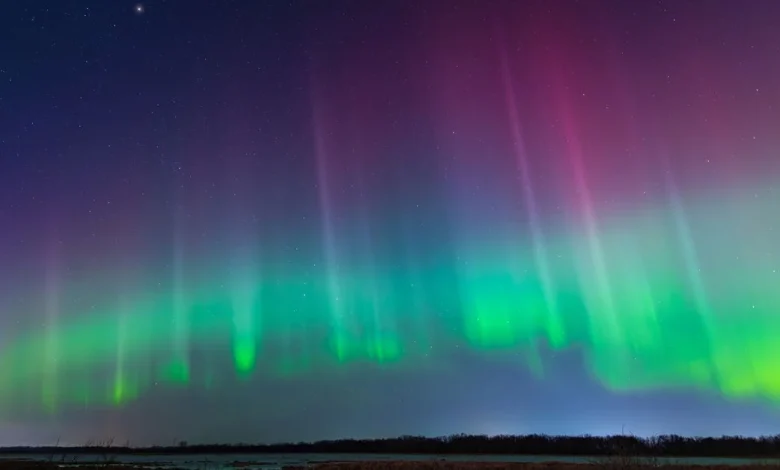Missed out on seeing the aurora australis? You get one last chance tonight

Those who missed out on seeing the aurora australis across the mid to southern parts of Australia will have one last chance to witness the phenomenon tonight.
People all over the country, from as far as Sydney and Perth and the Northern Territory and Tasmania, recorded seeing the green and purple lights over the night sky yesterday.
It is quite rare for auroras to be visible over large parts of the country.
The aurora australis will be on display for mid to southern parts of Australia thanks to a severe geomagnetic storm impacting Earth. (Getty)
The Bureau of Meteorology’s Space Sector Engagement Lead, Dr Sarah Reeves, said the auroras were “reasonably strong”.
”To be able to see it from all of the different parts of the country that had sightings is reasonably unusual, not completely unheard of,” she said.
The US National Oceanic and Atmospheric Administration’s 30-minute aurora forecast anticipates the aurora will be visible again at sunset today around 8pm to 8.30pm.
Swinburne Space Technology and Industry Institute Dr Rebecca Allen said tonight will most likely be the last chance to catch a glimpse.
“These things build up over a few days, and then they release. So it’s probably be a bit of time before we would see auroras again,” she said.
Allen said people further south of mid Australia and on the east coast may have a better chance of witnessing the auroras.
The Bureau of Meteorology’s Space Weather Forecasting Centre is less confident and believes the chances of seeing the aurora are small to unlikely.
“We think we’ve passed the peak of the geomagnetic activity now, and it’s a weakening trend, but certainly it’s something that we’re monitoring constantly,” Reeves said.
Auroras do not need to be overhead to be viewed and can be seen as far as 1000km away if it is bright and the conditions are right.
They are best seen at places with a clear view of the horizon, like a beach or bay.
Auroras are caused by particles from a geomagnetic storm interacting with the Earth’s magnetic field. (Bureau of Meteorology)
Tonight’s spectacle is caused by a severe geomagnetic storm that is impacting the Earth.
The storm was sparked by three coronal mass ejections, also known as solar flares, which sent out particles that interacted with Earth’s magnetic field.
Allen says that interaction with Earth’s magnetic field is what creates the “beautiful curtains of light”.
“The last bit of that energy, energetic coronal mass ejection, has already reached Earth, so unless there’s another significant event that happens today, we wouldn’t expect there to be any more peak activity for a while,” she said.
The sun is currently at its most active part of the 11-year solar cycle and is peaking.
“So that’s why we’re seeing so much aurora activity,” Allen said.
Allen said there have been more reports of aurora activity than ever before, which has set a “new tone for what we expect” in the coming years.
“We haven’t seen anything like this before,” she said.
“What’s to say during the next solar cycle that there couldn’t even be more of these flares?”




